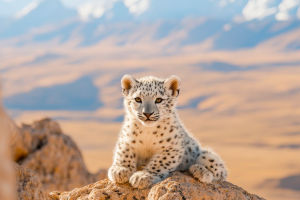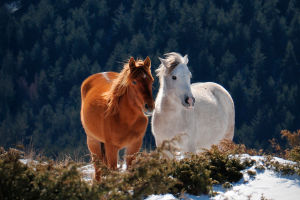Hey Lykkers! Let's dive into a topic that's not glamorous but super important—animal waste management. From small farms to large operations, managing animal waste is a big deal.
If not handled properly, it can pollute water, damage ecosystems, and impact air quality. But when you apply the right methods, it can become a valuable resource.
This guide walks you through how animal waste affects the environment and how you can manage it more sustainably. Whether you're working with chickens, goats, or a whole pasture of livestock, you'll find helpful ways to make sure your practices support both animals and the environment.
Part 1: Understanding the Environmental Impact
Before jumping into solutions, let's talk about what happens when animal waste is left unmanaged. It's more than just an unpleasant smell—it has ripple effects on soil, water, and air quality.
Runoff and Water Pollution
When animal waste isn't collected or stored properly, rain can wash it into rivers, lakes, or groundwater. That runoff carries nutrients like nitrogen and phosphorus, which can trigger harmful algae blooms and upset aquatic ecosystems.
You can spot signs of pollution in water bodies when they look murky, smell odd, or develop foamy layers. It's crucial to set up barriers or buffer zones near water sources. Planting strips of vegetation around pens or storage areas helps absorb and filter out excess nutrients before they enter waterways.
Air Quality and Gas Emissions
Animal waste naturally releases gases like ammonia and methane. When these gases build up, they not only affect air quality for animals and workers, but also contribute to global climate shifts.
To cut down on emissions, you can start by composting waste in open, well-ventilated areas. This reduces gas buildup and helps break materials down more efficiently. You might also explore covered lagoons or digesters, depending on your setup. Even small changes in how often you clean pens or turn compost can make a big difference.
Soil Overload and Balance
Adding waste to soil isn't always a bad thing—it provides nutrients. But too much of it can lead to over-fertilization, damaging soil health and harming plants.
You'll want to keep track of how much manure is being applied and rotate areas where you spread it. Spreading too much in one spot can backfire, so use it like seasoning—spread it evenly and not too often.
Part 2: Sustainable Solutions and Smarter Systems
Now that you know the challenges, let's explore some friendly, effective ways to manage animal waste better. With a bit of planning, you can turn waste into a helpful asset.
Composting for Cleaner Outcomes
Composting is a natural way to transform raw waste into nutrient-rich material. It reduces odor, kills harmful pathogens, and turns something messy into something useful.
Start by setting up a composting area with good drainage and some airflow. Add plant-based materials like straw, leaves, or wood shavings to balance moisture and carbon. Turn the pile regularly to keep things fresh and oxygenated. You'll notice how the material slowly changes in color and texture—signs it's breaking down into something garden-friendly.
Manure as Fertilizer and Energy
Instead of throwing waste away, think about how you can reuse it. Many small farms use dried manure as organic fertilizer, especially in fields that grow animal feed. You might also explore biogas systems if you manage larger numbers—these systems break down waste and turn it into fuel.
Before spreading manure, consider having the material tested. That way, you'll know what nutrients it contains and how to apply it wisely. It helps the soil without causing overload.
Better Storage and Planning
Storage might not sound exciting, but it's one of the keys to good waste management. Covered pits or containers protect waste from rainfall, reduce runoff, and make it easier to manage smells.
Try to design a storage area that's easy to access but far enough from animal housing and natural water sources. When you plan your layout with care, cleaning and collection become easier, too—and that means less mess in your daily routine.
Lykkers, managing animal waste doesn't have to be messy or complicated. With just a few thoughtful steps, you can protect local ecosystems, improve your animals' surroundings, and even create something valuable from what's usually thrown away.
From composting and fertilizing to water protection and air quality, every small action counts. Keep it practical, keep it clean, and let your waste management practices reflect your care—for animals, the land, and the future.


